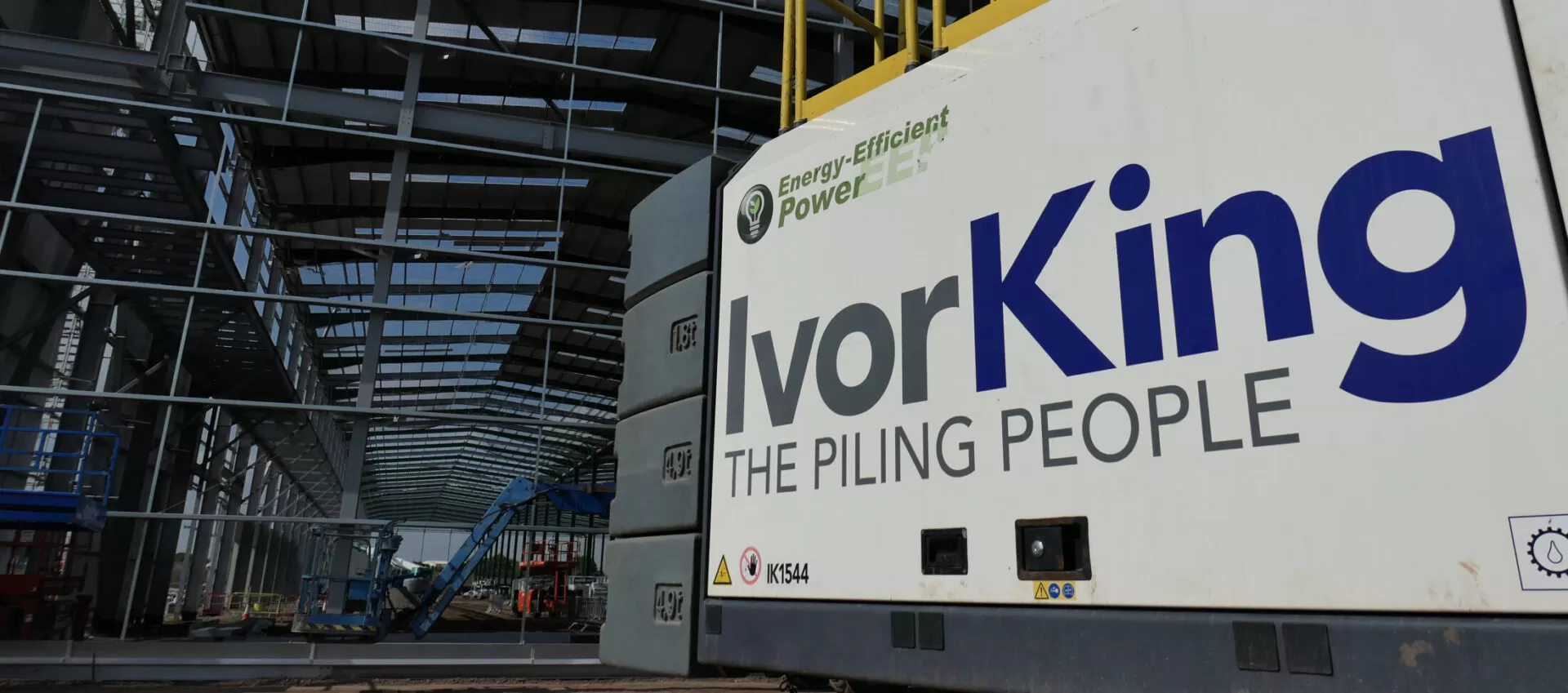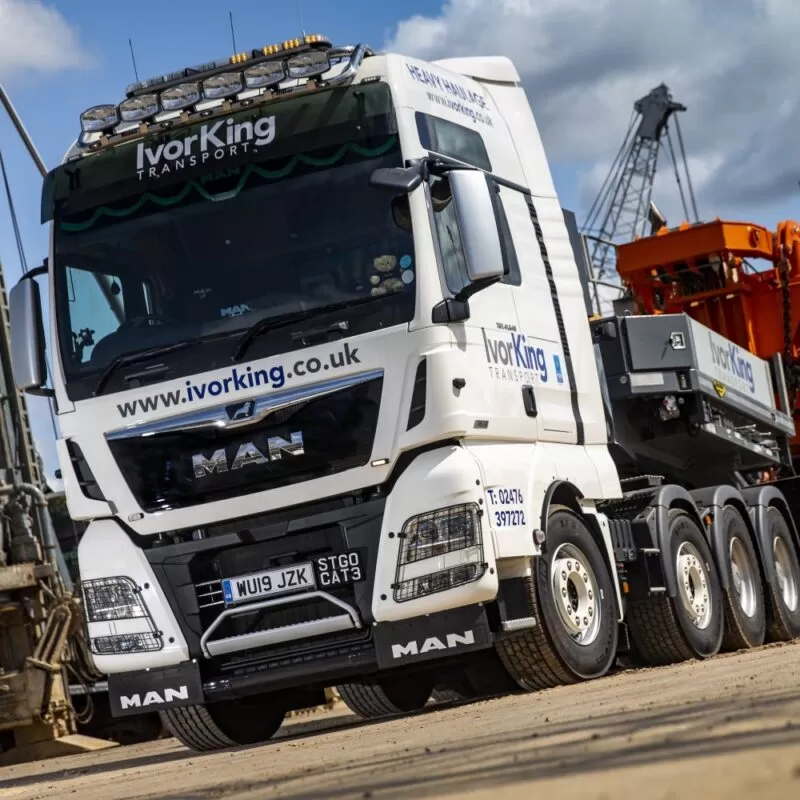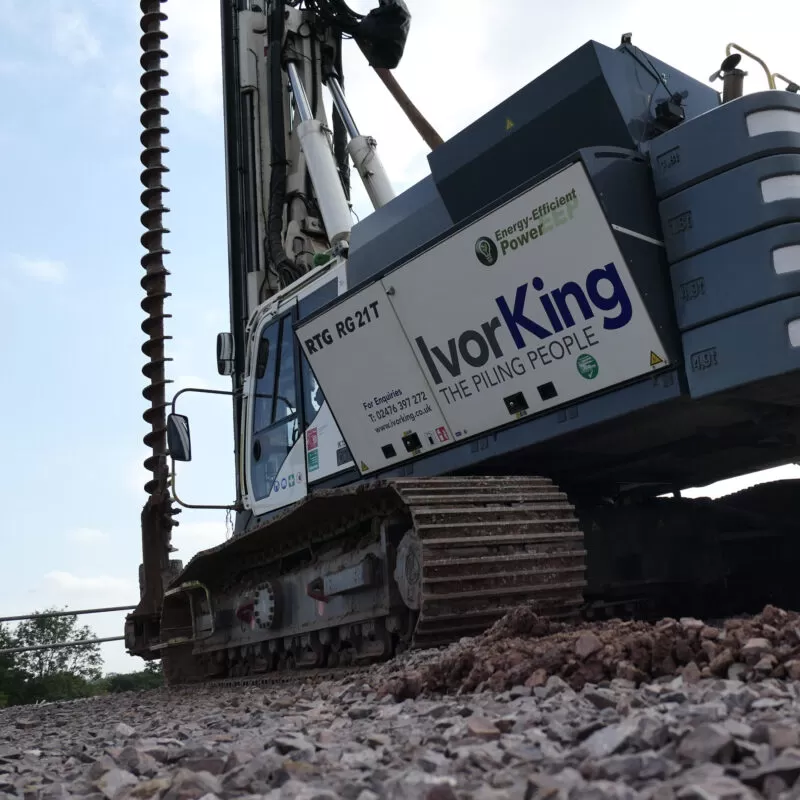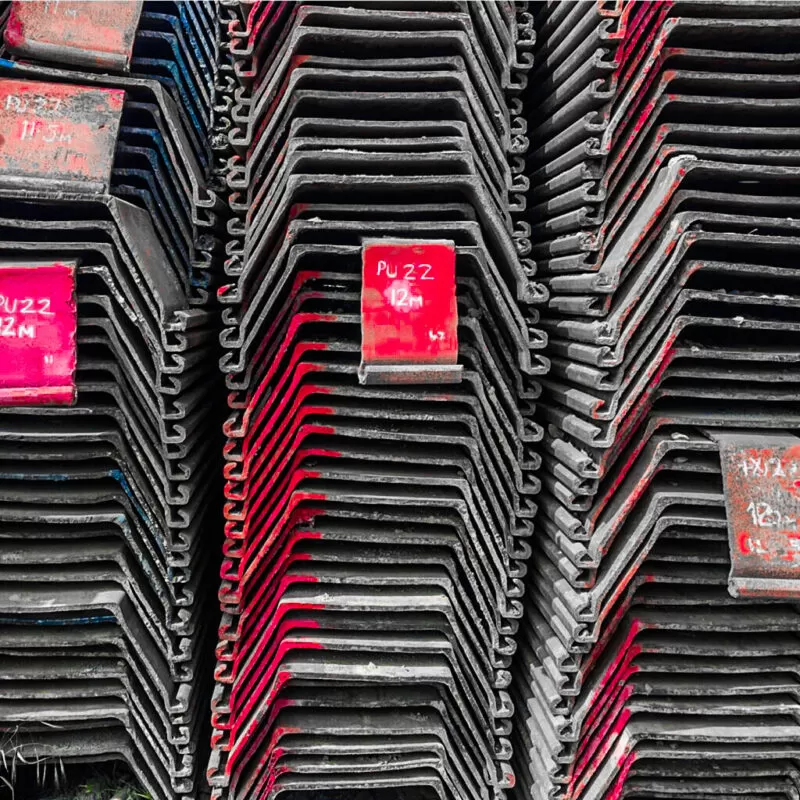Making the choice
Which Solution? There are many considerations to determine the best piling solution to meet your exact requirements.
For us to provide you with the best engineering solution to meet the needs of your project, there are numerous influences that require consideration when developing our final technical proposal.
It is vitally important to us that you feel confident with our approach, especially in understanding why our experienced design team has developed a particular solution to your brief.
Our experience, technical capability and extensive piling plant holding means we’ll never recommend a retaining wall solution or bearing pile foundation system over any other solution, based upon what we can or cannot install.
Because we own and operate our own plant and fleet, with in-house transport management expertise, plus servicing and vehicle maintenance capabilities, we can ensure our operation works efficiently around the clock. When required, we can quickly mobilise and respond to an enquiry and if urgent, within 24 hours of receiving your call.
One of the most important factors to consider when installing any type of piling solution is an understanding of the ground conditions present on each individual site.
Geological conditions vary dramatically around the UK and can even differ across a single site. Our team can design a suitable embedded retaining wall or bearing pile foundation solution, but require a comprehensive Ground Investigation Report (GIR) to allow us to design the best piling solution for your project.
Our in-house geo-technical and civil engineering expertise enables us to understand and interpret the ground conditions to determine the best fit solution in terms of design and method of installation.
For us to design your project in full compliance with Eurocode 7, a Ground Investigation Report completed to this Eurocode Standard (BS EN 1997-2:2007) is a basic requirement.
Noise, vibration, Party Wall Agreements and Section 61 Notices all produce restrictions which have a major influence on the choice of piling solution for any particular site.
Our unique range of wholly owned and operated piling equipment is capable of installing sheet piles, king posts and bearing piles, able to comply with the most stringent environmental restrictions imposed upon a site.
Our range of Giken Silent Piler and Hydraulic Hydro-Press Systems are our two principal methods of installing sheet piles in a virtually silent and vibration-free mode. We can combine these installation techniques with pre-augering to enable installation in dense or more cohesive ground conditions. Our Giken Silent Piling rigs can operate in Standard Mode following pre-augering, and with Water Jetting or Super Crush attachments fitted, which utilise water and simultaneous augering respectively to progress piles in dense ground conditions.
For standard vibro-hammer installation, we can reduce vibration and noise by pre-augering the ground prior to driving sheet piles into loose to medium dense cohesion-less material, or soft to medium stiff cohesive material.
Our ‘real-time’ vibration monitoring systems can be sited at sensitive locations, sending data reports to the piling rig. Operation of the piling equipment can be tailored to maintain vibration below set limits, conforming to site-wide restrictions.
Large retained heights, the requirement for vertical loading, low deflection limits, long design life and accidental loading requirements are all influencing factors when selecting the appropriate piling solution.
Site specific restrictions, ground conditions and design considerations are reviewed when designing the piling solution and each play an important part in choosing the best installation method for each project.
Our extensive range of modern piling equipment can bridge the gap between design requirements and any environmental restrictions imposed upon the site, enabling the choice of piling solution to be made purely on an engineering basis, rather than being determined by the type of plant available.
Our wholly owned and operated piling equipment, together with our own fleet of heavy haulage vehicles allows us react quickly and deploy the correct plant to provide the right installation technique, without compromise caused by other factors.
If a piling solution is to be used to enable the construction of permanent works, which will itself perform the function of retaining ground, then a revised set of criteria are used in the design considerations.
Temporary pile solutions are often designed to allow ease of removal; not something considered for permanent piling works. Whereas long-term durability will not be a consideration, choosing a pile section that is sufficiently robust to enable driving and extraction without damage will be an important factor.
Often temporary piles are re-used again and again. Section modulus for temporary works piles may exceed that used for permanent works by some margin.
Temporary solutions are also more likely to be supported by frames or props than those used as part of any permanent works.
There are always multiple solutions available for any particular engineering challenge. Typically budget is affected by the complexity and variety of interdependent influences of the project.
For example, retaining walls can be made to cantilever if sufficient steel is used to add stiffness. The piles can be temporarily supported using frames or other means, or held in place by anchors, which may use the ground itself or other piles to provide back support.
Whilst different solutions come with a different budget, there is often a compromise of some description; whether it is in the thickness of the retaining wall, the sterilisation of land due to underground anchors and/or piles, or the cost and installation time for framing.
The above considerations may all be dictated by budgetary restraints, whereby the pure engineering considerations become secondary. Our design and estimating team will offer guidance, together with engineering options, outlining their respective advantages and disadvantages in accordance with the available budget to help you make an informed choice.
You can have peace of mind that we’re committed to working with you to offer the right solution in accordance with your project budget.
Generally the choice between concrete bored piles and steel sheet piles or tubes is based on technical reasons; although where the lines between each technique are blurred, the primary reason may be cost.
Bored concrete piles offer excellent end bearing capacity, enhanced wall friction, a high degree of stiffness and can be constructed with a minimum of vibration. Concrete piles can be installed through hard ground layers. Piles of any size and length may be constructed on site. Correct design and construction will ensure a very long design life. Concrete piles can be used to provide simple embedded retaining walls, but the cost compared to that of a sheet piled wall is usually prohibitive.
Sheet piled walls can however offer load bearing capacity, as can driven steel tubes. Additional stiffness can be created by high modulus sheet piled walls. Vibration can also be avoided when driving sheet piles by pressing. Sheet piles can be installed in hard ground using specialist equipment.
The decision between choosing a concrete or steel piles solution is therefore not necessarily straightforward.
Our ability to offer a multi-disciplined approach to your project brief, whereby we can consider both concrete and steel sheet piles (or a combination of the two), means you can be assured our proposal is based on sound technical reasons whilst offering the most cost-effective solution.
We are able to supply a wide variety of size, weight and grade of steel in both new mill certified piles and excellent quality used stock. We permanently hold over 3000 tonnes of U and Z pile sections allowing us to offer a unique solution that can react to any urgent or emergency piling situation.
Furthermore, our wholly owned and self-operated heavy haulage fleet means we can quickly mobilise and deliver your order throughout the UK efficiently after receiving your enquiry.
Available in Mild Steel S270 and High Yield Grades S355 – S490 GP, our sheet piles are available to purchase new or second hand in a range of lengths, from 4.0m to 16.0m and are readily available in a variety of sections to suit your application.
Product tolerances are all independently certified and comply with BS EN 10248 Part 2 quality assurance.
Site specific restrictions, ground conditions and design considerations will be reviewed when designing your piling solution. Together they play a part in determining the best installation method for each project. Our wholly owned and operated piling equipment, together with our own fleet of heavy haulage vehicles allows us to react quickly and deploy the correct plant, providing the right installation technique to meet your project needs.
Our various methods of installation use specific types of pile driving equipment, each having their own benefits and operational merits. These include silent hydraulic press-in, impact hammers and vibratory pile drivers.
Whilst it is recognised that in common with most civil engineering projects, a measure of flexibility is desirable to meet site conditions; every precaution must be taken to maintain the necessary standards of safety, whilst also producing the correct alignment and verticality of the installed piles. A principal consideration of our piling solutions is given to plant and labour access, to ensure a particular pile can be pitched and driven safely and accurately.
Our ongoing commitment to forward investment means we can offer a range of wholly owned and operated state-of-the-art plant and equipment, giving complete flexibility to apply the correct engineering solution to meet the needs of your project.
Not only is the choice of installation method important in a successful pile installation, maintaining the safety of our team and others, whilst minimising environmental disturbance, it must also meet the engineering needs of your project.
The table below provides outline guidance on equipment selection in relation to environmental factors (i.e. the location of the works in respect of noise and vibration considerations).
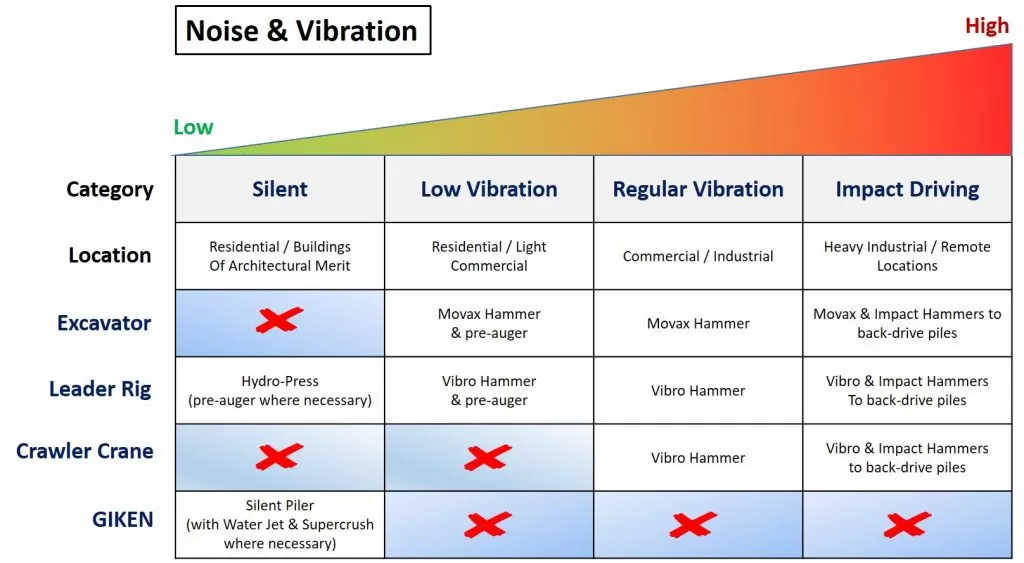
Did you know we also offer Construction Training?

